When
The 'When' dimension is everything around time and timing that comes in many different flavours. Hitting the window of opportunity is fundamental - not too early, not too late, just right - mathematically optimised.
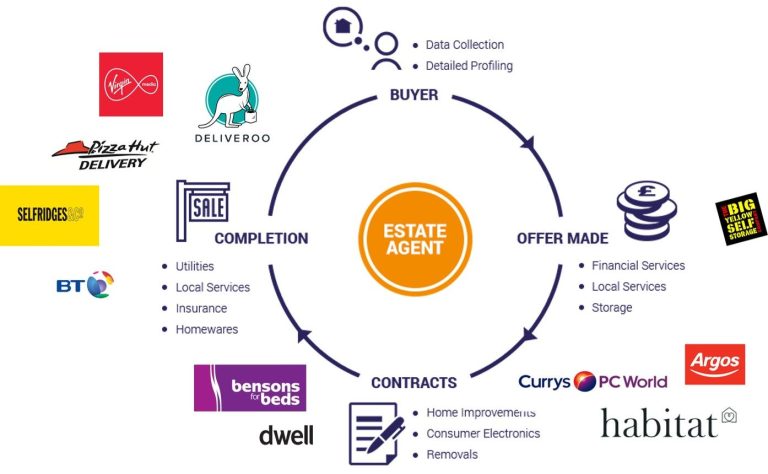
Purchase Triggers: Purchase clock [Stand]
When and why are very closely related in events that need some planning. Some prospects plan in advance and some are more just-in-time. A simple example is that car insurance needs to be bought before it runs out, so targeting a day late is pointless but 6 weeks before may only provide awareness and be forgotten at the purchase time.
In a house move there are some products that are needed to be organised well before (mortgage, estate agents, conveyance), before moving (new furniture, broadband), right at the move (electric supplier, food delivery).
Each purchase fits into an over all plan, structured or not, which suggests tying in to neighbouring or complementary partners for their signals.

Purchase Triggers: Customer Lifestage [Stand]
There are 5 general lifestage around the family dynamic: no kids, young kids, school aged kids, empty nesters, retirees. Handy for understanding large populations in a general but humanistic lens.
For the individual there are a few major steps that define the watershed of each, e.g. moving out, new child, children leaving home, retiring. Inside these epochs are home moves up and down the ladder, new jobs, new car and even new pet.
Each of these personal major events drives new needs and new spends, that could planned for and purchased before or just-in-time.
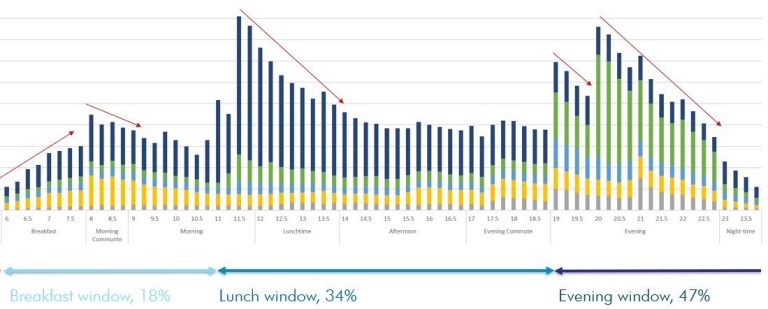
Contact timing: Email broadcast timing [Stand]
We're busy and don't engage with marketing every second of the day, no matter what the media wants, hopes or stereotypes. Those workers with more disposable income also tend to be the busiest.
Targeting the broadcast timing can either react to an trigger, e.g . website visit or programmatic, but media like email or telesales can control the timing of their contacts or broadcast to increase their engagement chances. The trick is to map timing be close to the top on the inbox when the inbox in triaged with time to consider. Both use previous actual or modelled answer/open time/date stamps to bucket customers. Emails can be split into 3 parts of the day and then ensuring the broadcast ends before these cut-offs: breakfast, lunch, evening.
Weekends are different, and these broadcast timings have changed over the years from when people used to use their computers at work, to fixed home computers, to laptops on sofa, to mobiles on the commute.
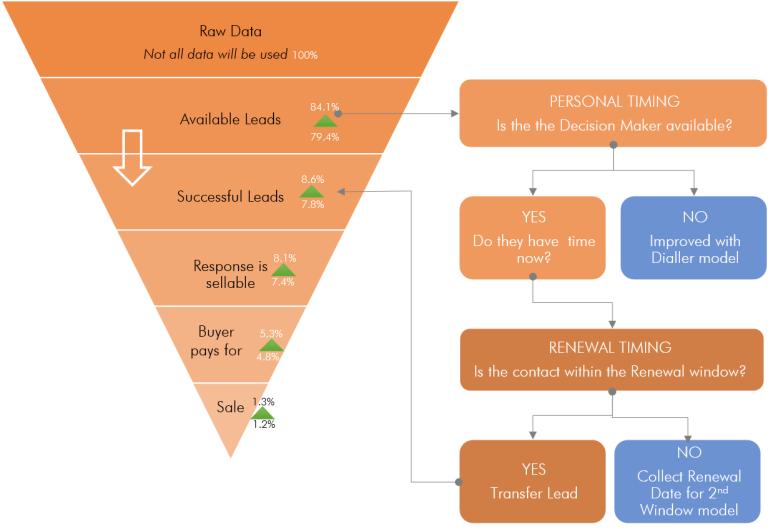
Contact timing: Telesales dialer model [Stand]
Telesales may be less used these days but still a strong conversion tool for B2B, especially for SME prospects, as it can overcome issues and jump through a few of the customer channel steps in one go. The trick is to work out when these 'decision maker contacts' are most likely to be available to focus on your proposition and make decisions.
These models are derivatives of the prescriptive propensity models I developed in my Masters. I've done many contact timing models for telesales dialers or email broadcasts and the uplift seems to always be around 10%, free, forever.

Contact timing: Seasonality
[Walk]
Connects to the 'why' weather topic. But rather than reacting to short term changes, this enables more planning to maximise the inevitable needs - especially in limited the loss of sales from out-of-stock situations of runs on certain topics.
Relevance models can pick out who is most like to purchase, and in this case, who has the lower barriers to purchase, to bring forward their purchase so that restocks can sell more in peaks. Using a simple offer like, "it's going to hot/cold/wet/schools back soon, so why not beat the rush and buy now." will flatten peaks and maximise sales.
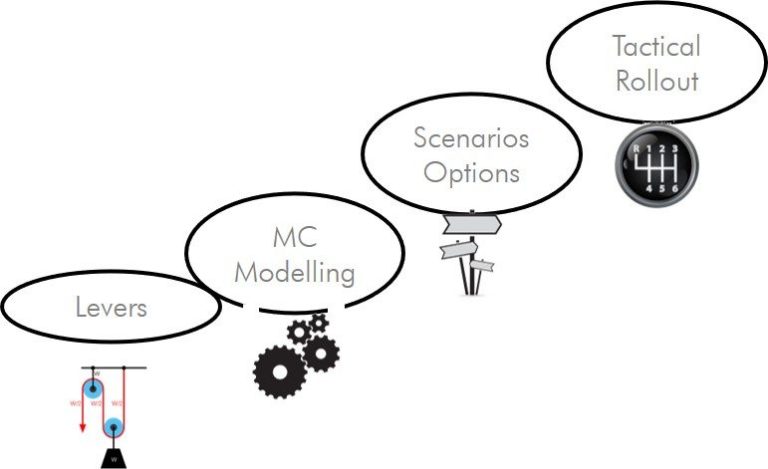
Always-on Sniper: See/Think/Do [Walk]
This can be pitched as very complex or reasonably simple. A 'walk' model version will be built like a 'if this then that' model. When done properly a very simple model is usually increase ROI by 20% better than an old school manual, human controlled method and take up less employee time. A more complex method won't really do much better as its the timeliness that makes the difference - but for big spenders the iterative gains will be massive compared to cost.
It could self learn but the key here is that, like a sniper it trains it's sights on a particular event (signal) and when that happens it reacts quickly. It's similar to programmatic but within your infrastructure. This is far more effective than the batch approach of old. It can happen as a triggered approach or even in a daily batch way, with a decision engine tagging in all the variables in the data and the marketing platform comms pulling together and pushing out a pseudo-personalised response.
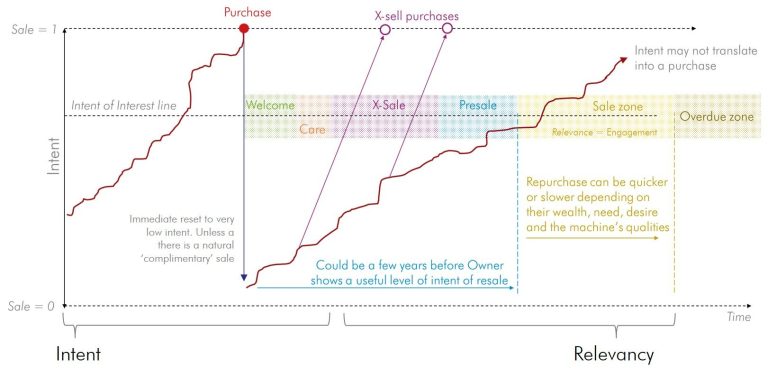
Always-on Sniper: Onboarding journey [Walk]
Most companies have thought through an onboarding program as its the adoption and feeling of value that gives good
intangible net promoter scores and tangibly lowers returns and increases retention /expansion /advocacy.
To be honest, some on boarding journeys are overthought and rigid, and should be tested against the same 'if this then that' sniper model methods, with adjusted goals to see if big-data combined with fast statistical computation can do a better job with less employee time.
The modelled approach would monitor and understand customers for longer than a typical onboarding programme and be are more timely. Being always-on would connect it right up to the next stage of the the process - the next purchase.

Always-on Sniper: Repeat warm-up [Run]
There is a lot more data and understanding about customers than prospects. So any repeat purchase model should be strong. Which is why I start building and testing my propensity models here. The targeting can also be done directly and indirectly in an organised, crafted and tested way that can assist with attribution models.
Some marketing professional may feel threatened by giving up the decisions that form their power base, but actually they should focus on how automation frees them up from those complex tasks with the knowledge that results will be better, and provide the time to focus on the parts that computers aren't that good at doing - like strategy thought and macro implications.

We need your consent to load the translations
We use a third-party service to translate the website content that may collect data about your activity. Please review the details in the privacy policy and accept the service to view the translations.
